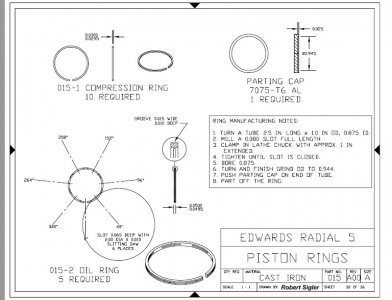Well the cast iron oil rings were no help at all. #1 cylinder was flooded with oil after about 10 seconds of run time just like before. I then drained out as much of the oil that I could and started it up.
Both cylinders are firing as they should.
The cylinder head temperatures are within 5 degrees of each other. (about 157 versus 161 degrees)
This would indicate they are doing the same amount of work.
The engine starts usually on one spin when warm and three spins when cold using the thumb choke method.
The engine idles around 850 rpms and accelerates well.
Over 1500 rpms it likes to jump around a lot and must be held down.
I made a video of the engine that is about 3 1/2 minutes long and that is about the max time I feel the engine can safely be run between cool down periods. There was no sign that the engine was being starved of lubrication but I am not going to press it further.
During the video you can me point out the fan belt vibrating violently. This happens at a certain rpm and sets up a loud snarl that at first I thought there was something bad about to happen. I also check the exhaust stacks with my hand to verify they are both firing evenly.
The fan belt and the oil problem will be set aside for now while I give the little grey cells time to ponder.
My video taking and editing skills leave much to be desired so I apologize in advance.
I am going to call this a success for now.
Thank you all for following the project and commenting along the way.
Ray

